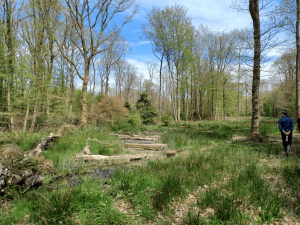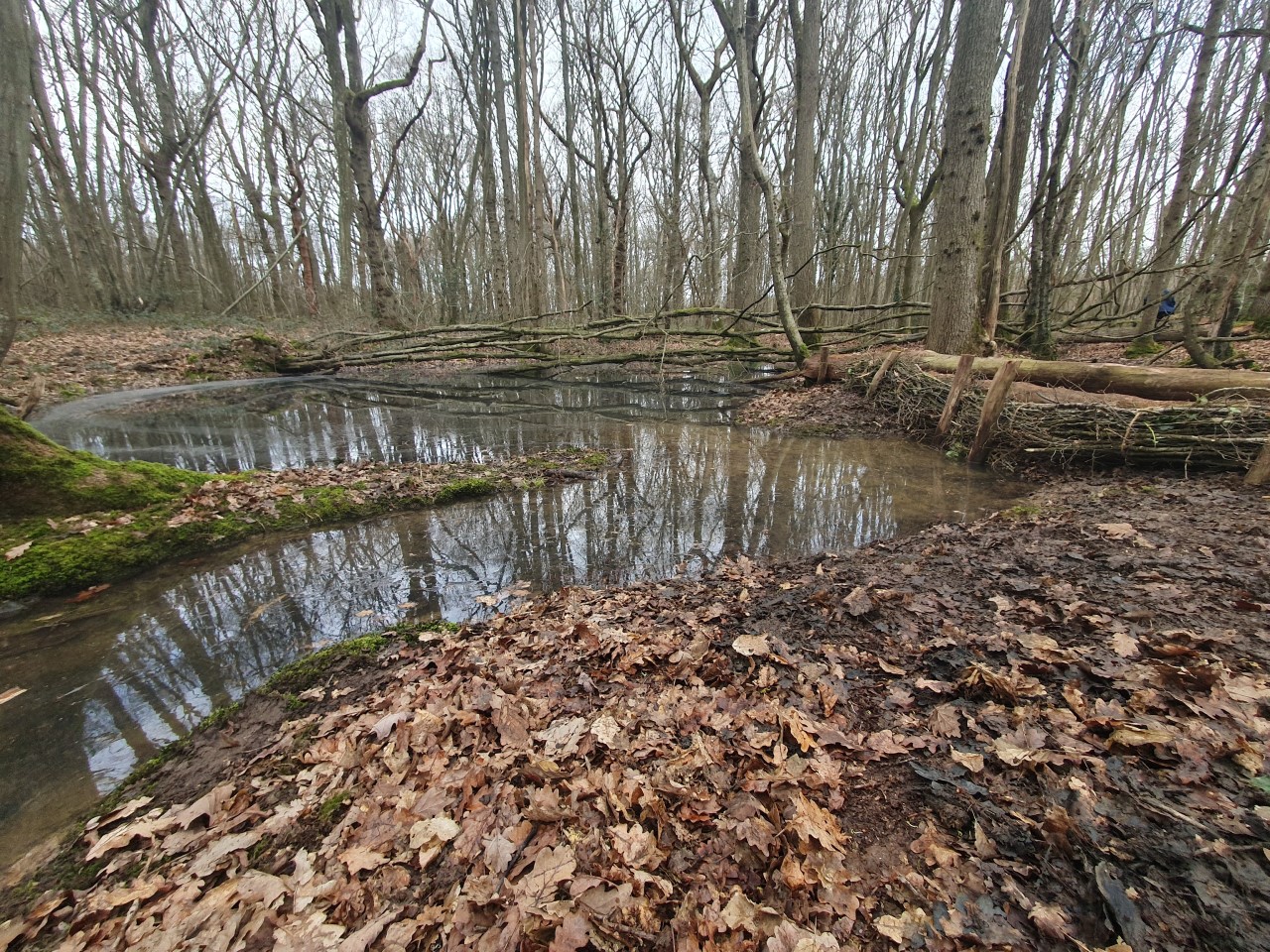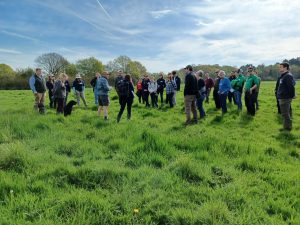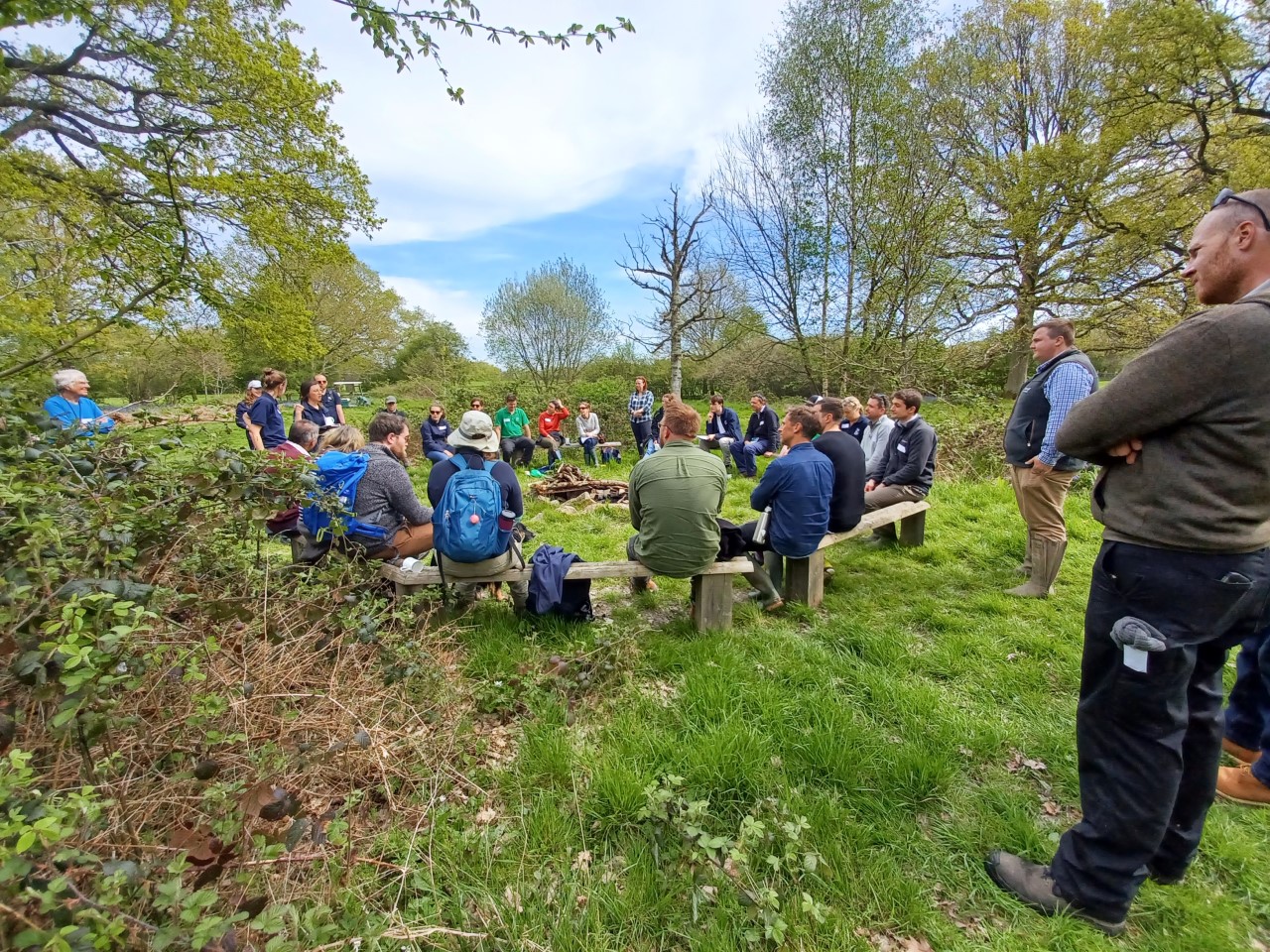One day in spring, in the middle of the woods of deepest darkest Kent, the South East Rivers Trust led a ‘safari’ to discover the value of nature-based solutions in increasing the resilience of our catchments and communities.
During the past few years, the South East Rivers Trust (SERT) has been developing a series of nature-based solutions for water with landowners in the Upper Beult Farm Cluster in Kent. Nature-based solutions for water (NbS for water) are features that hold back water in the landscape, slowing it down and filtering it so that water resources are replenished and flooding and pollution is reduced. These NbS include leaky woody dams, offline ponds and pasture management.
Explorers from a range of organisations navigated woods, wetlands and farmland to spot and learn about these NbS, covering four farms of the Upper Beult farm cluster.

So what was the purpose of this ‘NbS Safari’?
Firstly, it was to demonstrate how these solutions can underpin water resources provision, as well as achieve nature recovery and other social and environmental benefits.
Secondly, we wanted our guests to imagine what benefits could be achieved if these NbS could be “scaled up”, such as across the whole of the River Medway catchment, of which the Beult is just one part.
Finally, we were keen to spark thought and discussion among our guests about potential partnerships and support that could facilitate this ambition.
The 30-strong party of intrepid NbS explorers were led by Kathi Bauer, SERT’s Senior Natural Capital Officer – and the list of organisations represented was a long one. It included staff from Southern Water, which has supported the development of the NbS with the Upper Beult farming cluster.
Others interested to find out more came from SES Water, the Upper Medway Internal Drainage Board, Water Resources South East, Kent County Council, Kent Wildlife Trust, Waitrose, Linking Environment and Farming (LEAF), the Marden farming cluster, the Forestry Commission and Swale Borough Council.
The safari showcased work that we had initiated through our Interreg2Seas PROWATER project, and further work we have continued with Southern Water’s support. These efforts were the culmination of several years’ work. As we outlined earlier this year, the PROWATER project alone has helped retain more than 60 million litres of water (enough to fill 24 Olympic sized swimming pools) annually.
Kathi explained how we had worked closely with farmers and landowners. She outlined how we had used our expertise to identify, develop and implement appropriate NbS to regulate the flow of water at appropriate locations in the upper catchment of the Beult.
What types of nature-based solutions were explored?

Leaky woody dams were a key solution spotted on the safari: by placing branches and logs across channels and land where water is known to flow, water is held back and “spills” from the channels to create a small wetland. The result is that instead of heavy rainfall running straight off the land, its movement is more gradual. This means its contribution to the flow of the River Beult (an important source for water supply) is spread across many more months of the year.
Holding water in the landscape in this way also means creating richer and more diverse habitat, attracting vegetation, invertebrates and birds that feed on them.
Offline ponds – separated from the river network – were also part of the safari. Offline ponds can be created in natural depressions in the land where water is directed using leaky woody dams. By retaining water, they supplement the Beult’s summer flows and also boost plant and invertebrate biodiversity.
Pasture Management – the benefits of mob grazing were also outlined as part of the safari. If cattle feed on small sections of their grazing land one piece at a time, grass and other vegetation is able to recover and establish. Water soaks into the soil better, with benefits including slowing the run-off of rainwater and pasture that is more resilient to drought.

Together, these nature-based solutions are managing the landscape for water and helping to address water scarcity in the south east, while also providing a range of additional benefits including natural habitat improvements. These solutions are therefore key to reversing the declining trend in biodiversity. According to the Natural History Museum, the world has already gone through the “safe limit for humanity” of biodiversity loss. The UK, its analysis says, has an average of only 53% of its biodiversity left and is in the bottom 10% of countries globally – and last among the G7 countries.
Multiple nature-based solutions all add up, which is central to the Catchment Based Approach (CaBA) principal of managing landscapes as a whole, rather than as separate sections of river or land in isolation.
This is central to our thinking at SERT and something with which those on this NbS Safari agreed: we need to make more of this happen.
For more information and to get in touch about developing nature-based solutions in the landscape, contact Cat Moncrieff, our Head of Water and Land Stewardship. Contact us at info@southeastriverstrust.org or by telephone, on 0845 092 0110.

